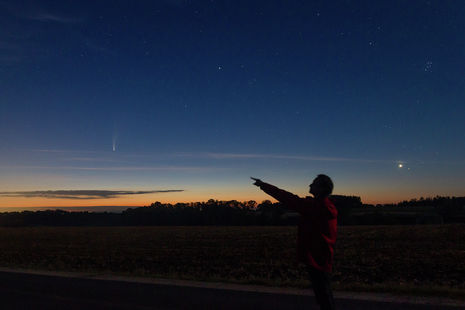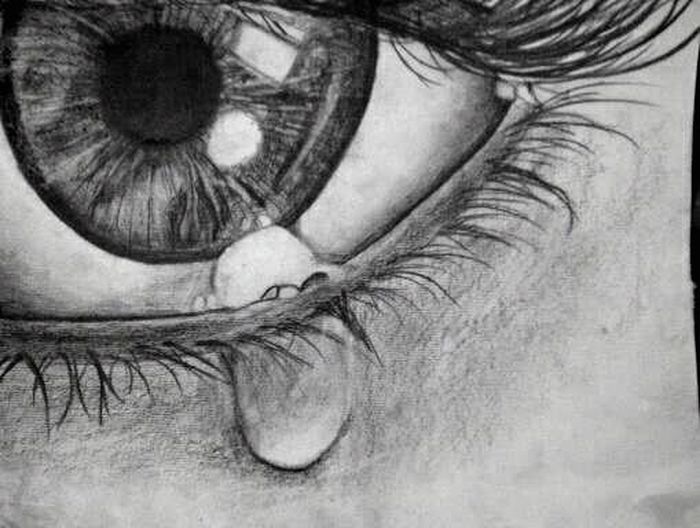How constellations help us to look inwards
In his ‘Small Comforts’ column, Ewan Martin gets introspective about his favourite constellation: the Plough.

Up above the world so high, amidst the pantheon of other stars, seven hang together. I don’t know their individual names, of course, but they don’t hang namelessly. I know them collectively as ‘The Plough’.
Also known as ‘The Big Dipper’, ‘The Ladle’, or ‘The Canoe Stars’ (if you’re Indonesian), the Plough is my constellation of choice, when I choose to constellate. Admittedly, it isn’t much of a choice: sometimes Orion thrusts his pelvis forth, but on most nights the Plough is the only constellation that I’m able to find.
It’s a bit of a meek effort: everyone knows the Plough — and it’s not even a constellation! Wikipedia tells me it’s actually an ‘asterism’ — a popularly-known but unofficial pattern or group of stars. The Plough isn’t a constellation in its own right, because it’s part of Ursa Major, ‘The Great Bear’. Personally, I think that Ursa looks less like a bear and more like the Plough surrounded by a few other stars. So, I plough on, as I have since I was yae high and my dad first showed me how to join those seven unknowable twinkles into a recognisable shape.
“Constellating, like any kind of nicknaming, is a shallow claim of familiarity”
I constellate to make that moment recur, and for this the Plough is enough. While I admire the enthusiasm of those who can pick out proper, official constellations one after the other, all of their pointing can begin to feel pointless — and usually gives the impression that they’re trying to cordon off the celestial bodies. I assume they’re attempting to keep up an acquaintance with the stars, to make them feel neighbourly — but constellating, like any kind of nicknaming, is a shallow claim of familiarity. Finding shapes amongst the stars gets us no closer to appreciating their lone and ginormous reality. Rather, the act of patterning and the patterns themselves tell us interior truths about humanity, and how we’ve responded to our nightly glints from the infinite.
Why the constellating superstition endures
The constellations were conceived by prehistoric us — by roofless sleepers who fashioned a mobile above the turning cot of the word. Just as it’s a relief to observe the shadow of a hand resolve itself into an imitation of a dog, our predecessors likely found solace in familiar forms found in the dark of night.
Of course, they had a pragmatic advantage too. It’s easier to recognise a group of stars than to identify a star alone, and so constellations would have been essential for nocturnal navigation. Even today, most ships carry a sexton — a device used to follow the stars if the onboard GPS fails.
But as for us landlubbers, why don’t we erase the pagans’ scribbles upon the sky? What superstition or sentiment stops us from doing as we do with clouds, and letting the imagination interpret them as it wishes? Well, the clouds change, but the stars are pretty consistent — and because they’re fixed in place, we’ve had time to agree on their resemblances. But why do we seek out the same old shapes, rather than forming new ones? I’d say it’s because constellating isn’t a dilation of the imagination; it’s a contraction into memory.
Spotting the constellations allows us to relieve our bottomless speculation about what lies beyond us and to turn inwards to a grounding nostalgia. Our ancestors looked up at the silent, heightless abyss and adorned it with earthly creatures and recognisable instruments: a plough, a maiden, fishes, scales, a sextant…
I’m sure I had no idea what a plough was when Dad first brought the Plough to me. But I’d have had a toddler’s awareness that he was showing me a thing of human use: a tool that was doing some unknown work to keep me safe.
Likely, the Plough isn’t actually too concerned about my safety. Astrology is a living relic, but the modern world is increasingly confronted with the notion that it isn’t the centre of the universe, and that the stars don’t hang for us. The paternal divine, decorating the skies for his children, is hard for me to believe in. And yet, when I look to the unsupervising stars and find the Plough, the night feels full of fatherhood.
Constellating as a choice
That our sun could be a fixture in just one of an alien planet’s many constellations is a frightening and thrilling idea, but it is hard to maintain such proportions of galactic irrelevance. Self-absorption can be comforting, and the end of stargazing is always a re-absorption into ourselves. Our strained neck, our chilly noses, the breaths of our fellow uplookers, bring us back into our own lives.
Before we drift homewards, if we take a last look at our constellation of choice, we can choose to release it into the night. I can snap free the three stars that make up the Plough’s handle, let them loose from each other, and bid them to join the other constellations not so far away. Or, braver, I can let them be alone, leaving each one to its singular, untouchable, heedless enormity, and wait for our only sun to return.
But the next night, I’ll look up and see the Plough again.
Constellating is a choice; most nights — despite, or perhaps because of my galactic irrelevance, I choose to turn inward as I look outward. Confronted by the infinite, I claim my seven, just like Dad, just like the generations behind us.
Looking up makes us all feel like children — by constellating, we huddle ourselves in with our fathers, and with the rest of mankind.
 News / SU stops offering student discounts8 January 2026
News / SU stops offering student discounts8 January 2026 News / Uni-linked firms rank among Cambridgeshire’s largest7 January 2026
News / Uni-linked firms rank among Cambridgeshire’s largest7 January 2026 Comment / Plastic pubs: the problem with Cambridge alehouses 5 January 2026
Comment / Plastic pubs: the problem with Cambridge alehouses 5 January 2026 News / New movement ‘Cambridge is Chopped’ launched to fight against hate crime7 January 2026
News / New movement ‘Cambridge is Chopped’ launched to fight against hate crime7 January 2026 Comment / What happened to men at Cambridge?31 December 2025
Comment / What happened to men at Cambridge?31 December 2025











